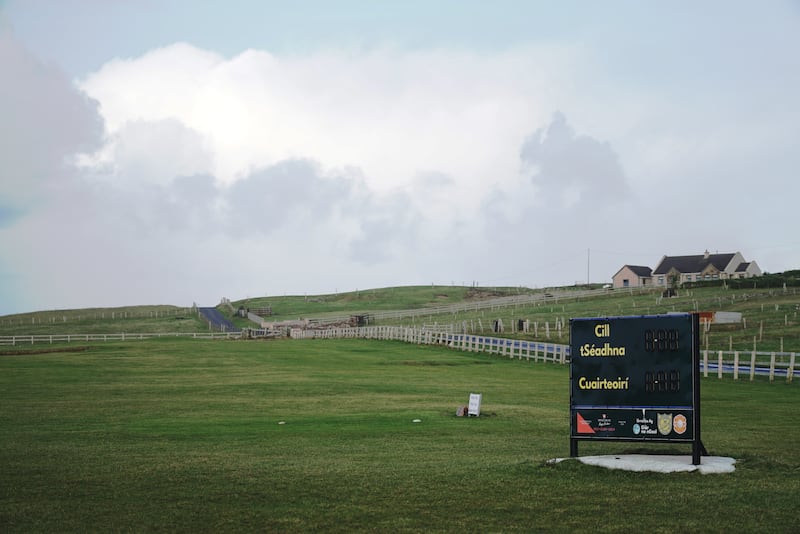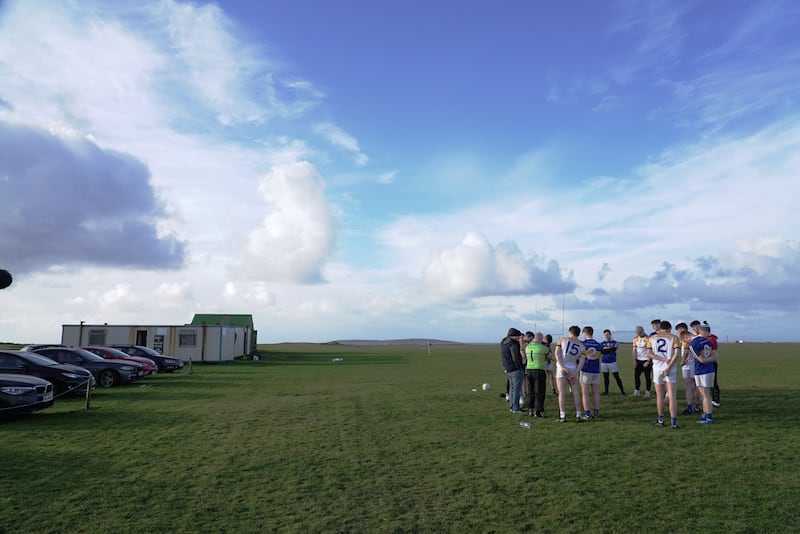Both rural and urban GAA clubs face increasing challenges as demographics in Ireland change. This is one of a series of articles exploring the issues clubs face and what they are doing to adapt
Kiltane (Mayo)
Founded: 1962 (as Bangor St Patrick’s). Members: 365.
Number of teams: five teams (plus 10 underage with Erris St Patrick’s amalgamation).
In a way, Ciarán Ó hEadhra is an embodiment of the problem – as he acknowledges. If the most commonly perceived impact of depopulation is the difficulty in continuing to field teams, there are also consequences for all club activities.
RM Block
The television producer’s involvement with his home club has been demanding: in recent years he has been both chair of Kiltane and manager of its football team.
“Population decline is often looked at in terms of playing numbers,” he says, “but it affects every aspect of a club. We struggle to get new officers year on year because of it or to get coaches for teams. We struggle to get referees, so we can’t play the full role we played in the GAA in the past.”
It’s not that Kiltane have become the football equivalent of a famine cottage. Within the last 10 years, the club contested an All-Ireland intermediate club final but compared with the previous, consistent competing at senior, it’s a loss of status.
The club has also amalgamated at underage with Ballycroy to keep numbers at critical mass. Although in general wary of the process – “it rarely carries all of the communities with it” – Ó hEadhra says the arrangement has worked well.
“Our underage amalgamation is with a junior club so there isn’t a rivalry there because we were traditionally senior and we’d have previously had their players line out with us when they couldn’t field an underage team.
“I said at the first meeting that our objective was to maintain strength in both clubs and it wasn’t our intention to poach players as a stronger club – at the time we were senior.”
He references the research work of local journalist Edwin McGreal, who has put figures on the impact for rural areas in Mayo.
“For example, the numbers for under-15 this year are 13 boys from the parish. Couple that with national school numbers. In 1994 there were 336 pupils. Now it’s less than a third of that across the three schools.
“Ed made a great point on his podcast that if people aren’t alarmed by population decline, consider that the team that last won All-Irelands for Mayo had three players from Kiltane and Tom Langan [one of the county’s two inclusions on the GAA Team of the Millennium] from Ballycastle – places that have a storied status in the game but are now on their knees.
“I go online and I see former players of ours congratulating their kids on playing for Kildare or Dublin minors. That’s what you see as lost potential.”
Even the current numbers for the club don’t bear easy comparison with the past because of the strengthening presence of women footballers. Of 365 registered members, 256 are players, 138 male and 118 female. “When you get into adult there are 35 men and 32 women.”
For the GAA, the problem of depopulation isn’t simply the national picture of eastward migration towards the greater Dublin area. The flight from rural Ireland to larger centres of population is also a factor within counties.
“That’s the other thing Ed McGreal found,” says Ó hEadhra. “National school numbers in the towns were increasing and particularly the towns in southeast Mayo, the ones that are closer to Galway. Effectively population is being magnetised towards number one, urban environments and number two, hinterlands for cities.”
He points out how, for example, Westport has been transformed by its success in attracting foreign direct investment, such as Allergan, to complement the traditional tourist industry.
Two major factors contribute to decline and shift in population. One is the historic imperative of economic opportunity. Emigration has long been part of the west of Ireland story but as it came in waves, so the fortunes of local GAA clubs ebbed and flowed.

When the Erris league, contested by townlands in the area, folded in the 1950s because of emigration, Bangor St Patrick’s was founded with constituent parishes of Kiltane, Ballycroy and Kilcommon, all three of which are now separate clubs (Ballycroy’s independent existence goes back to the 19th century).
Kiltane found its niche in Mayo football, as outlined by Ó hEadhra. “Our tradition has been as one of the smaller senior clubs but always able to produce quality players and no problem fielding underage teams because families were larger then.
“I mean we always had emigration – it was almost a rite of passage in our area – and it was huge again in the 1980s but underage was always sustained by large families.
“The two biggest changes and problems I see are planning legislation, which means young families can’t build within their own parish boundary and secondly, smaller families.”
The size of families has become a modern complication to the history of emigration. Those left behind aren’t replacing those departed at the same rate.
In a situation where every development, however small, can have significance, the obsolescence of the fossil fuel industry is a concern for Kiltane and the area. The peat-fired generating station at Bellacorrick – opened by future president Erskine Childers in 1963 – was decommissioned after 40 years in 2005.

“It employed hundreds in harvesting peat and operating the plant,” says Ó hEadhra. “Since it closed, that land has been taken over for wind farms, which don’t require that level of labour. So it’s not being replaced with an equal number of jobs.
“The other major employer is the gas terminal. I’d say one third of our senior team works there. Again that’s a finite resource and they’re already talking about what they’ll do when it runs out.”
A reopened hotel in Geesala had an immediate benefit for youth employment and a remote working hub, delayed by the onset of the pandemic three years ago, is coming online but the hoped-for dividend of locals returning to work remotely hasn’t had the impact originally imagined.
“These numbers have frightened us because they’ve just crept up,” concludes Ó hEadhra. “It is so central to the area. It gives people morale, good health, social outlets – it’s central to life in the area.
“If the club goes out of existence, all that is lost. The simplistic view is to look at it as a facility for footballers but it goes beyond that. It’s coaches and administrators, the opportunity to socialise for elderly people in the community.”
♦ Kiltane GAA was shocked and saddened this week by the sudden passing of founder member Bernie Scanlon, after “a lifetime of outstanding service to the club”. The longest serving active member of Kiltane, he made “an enormous contribution as founder member, player mentor, delegate, executive officer, club ambassador, worker and fundraiser”. Ar dheis Dé go raibh a anam dílis.
















